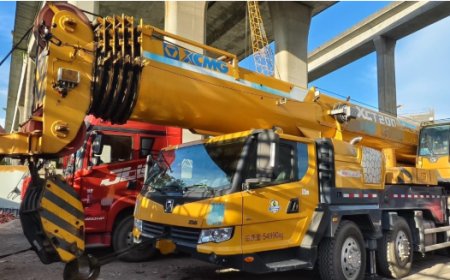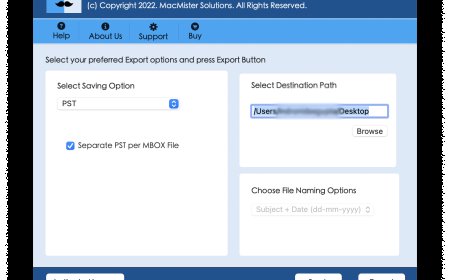What Is EDM in Manufacturing? Benefits, Applications & Industry Uses
Explore the role of manufacturing EDM in modern industries. Learn how EDM works, its benefits, industry applications, and what to consider when choosing an EDM manufacturer.

Modern industries rely on precision, efficiency, and innovation to stay competitiveespecially when producing complex, high-tolerance parts. One of the most powerful tools making this possible is manufacturing edm, a non-traditional machining method widely used for hard-to-machine materials and intricate geometries.
Electrical Discharge Machining (EDM) has become essential in sectors like aerospace, medical devices, automotive, and electronics. Unlike conventional machining that uses physical force and cutting tools, EDM uses electrical sparks to shape materials with extreme precision.
This article explores what EDM is, how it works, its benefits, limitations, and why it continues to grow in relevance across high-tech industries.
What Is Electrical Discharge Machining?
EDM is a thermal-based machining process where material is removed from a workpiece using controlled electrical discharges (sparks). These discharges occur between two electrodesone is the tool, and the other is the workpiecewhile both are submerged in a dielectric fluid. The fluid acts as an insulator until the spark is generated, and it also cools the area and removes the eroded material.
There are two main types of EDM:
Sinker EDM: Uses a custom-shaped electrode to create cavities and detailed internal features.
Wire EDM: Uses a thin wire to cut intricate profiles and contours through thick or dense materials.
Both methods are capable of producing highly accurate and finely finished components, making EDM ideal for parts requiring tight tolerances and intricate shapes.
Key Advantages of EDM in Manufacturing
1. High Precision and Tight Tolerances
EDM allows manufacturers to produce components with extremely fine details and tolerances down to 0.0001 inches. This level of accuracy is crucial in industries where part performance directly impacts safety or functionalitysuch as in aerospace engines or surgical tools.
2. No Contact, No Stress
Since EDM uses electrical energy rather than physical cutting, there is no mechanical force applied to the part. This means no stress, deformation, or surface damageperfect for delicate, thin-walled, or heat-sensitive materials.
3. Ideal for Hard or Exotic Materials
Hard metals like tungsten carbide, Inconel, titanium, and hardened steel can be extremely difficult to machine conventionally. EDM excels at shaping these materials, opening the door to stronger, more heat-resistant components.
4. Superior Surface Finish
EDM produces smooth surface finishes, reducing the need for post-processing or secondary operations. This contributes to faster turnaround times and better overall product quality.
5. Excellent for Prototypes and Low-Volume Production
Although EDM is slower than traditional machining for large volumes, its extremely efficient for prototypes, one-offs, or low-volume production runs. Complex molds and dies can be produced without the need for expensive tooling.
Industry Applications of EDM
EDM is widely used across several industries due to its versatility and high accuracy. Below are some of the most prominent sectors leveraging EDM for advanced manufacturing:
Aerospace
Aircraft components must withstand extreme environmental conditions and function with absolute reliability. EDM is used to manufacture turbine blades, fuel system parts, and airframe components that demand high strength and precise dimensions.
Medical Devices
Medical instruments and implants require flawless precision and smooth finishes to meet safety and hygiene standards. EDM is commonly used to produce orthopedic implants, surgical tools, and micro-scale components for devices like pacemakers.
Automotive
In the automotive industry, EDM is vital for producing complex dies and molds used in engine manufacturing, transmission systems, and fuel injection components. Its ability to replicate intricate patterns improves both performance and production efficiency.
Electronics
With the ever-shrinking size of consumer electronics and microchips, EDM provides the fine detail and accuracy needed for tiny, complex components. Wire EDM is especially useful in the production of electrical connectors, housings, and sensor parts.
Limitations of EDM to Consider
While EDM offers many benefits, it also comes with a few limitations:
Only for Conductive Materials: EDM can only be used on electrically conductive materials, ruling out plastics and most ceramics.
Slower than Conventional Machining: For high-volume or simpler shapes, traditional milling or turning may be more efficient.
Electrode Wear in Sinker EDM: Electrodes can wear down over time, especially during deep or prolonged operations, requiring monitoring and occasional replacement.
Despite these drawbacks, EDM remains an ideal solution when complex detail and material hardness outweigh speed or volume.
The Future of EDM in Smart Manufacturing
The role of EDM in manufacturing continues to evolve with advancements in automation and digital technology. Todays EDM machines are often integrated with:
CNC control systems for improved accuracy and automation
IoT sensors for real-time monitoring and predictive maintenance
Advanced software that allows manufacturers to simulate and optimize tool paths before machining begins
Additionally, improvements in dielectric fluids and power delivery systems are increasing the speed and efficiency of EDM processes. This makes it an even more attractive option for precision manufacturing in a digital-first industry.
How to Choose the Right EDM Manufacturer
When precision and quality matter, choosing the right EDM service provider can make a significant difference. Look for a partner that offers:
Expertise in your specific industry
Up-to-date EDM technology (both wire and sinker)
Certified quality systems (e.g., ISO 9001, AS9100)
Skilled technicians and engineering support
A track record of on-time delivery and responsiveness
Working with a trusted EDM specialist ensures not only the success of your parts but also smoother development cycles and fewer production challenges.
Final Thoughts
Electrical Discharge Machining plays a critical role in modern manufacturing by enabling the production of complex, high-tolerance components with exceptional precision. From aerospace to medical devices, EDM is essential when traditional machining methods fall short.
While it may not be the fastest or most universal method, its unique advantages make it indispensable in applications requiring detail, durability, and material versatility. For manufacturers focused on innovation, EDM continues to offer a powerful edge in producing quality parts that meet todays high standards.






























